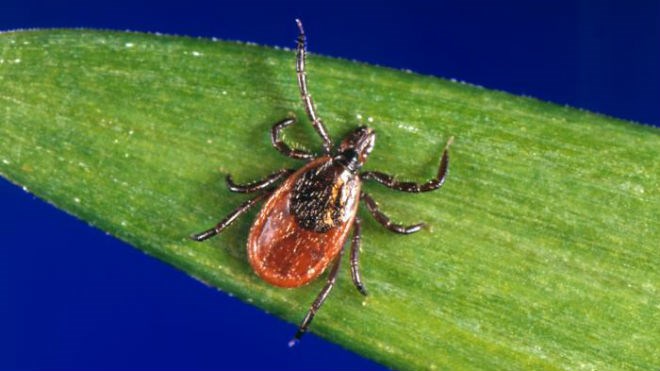While the Sudbury and District Health Unit (SDHU) recently found a tick that tested positive for Lyme disease, the blacklegged ticks that sometimes carry the bacteria that causes the disease remain relatively uncommon in Northern Ontario.
Curtis Russell, a senior program specialist with Public Health Ontario, said blacklegged ticks are more commonly found along the north shores of Lake Erie, Lake Ontario, and along the St. Lawrence River.
They are also more common in the New England states and Wisconsin.
But there is potential to find blacklegged ticks anywhere in the province, he added, because they often attach to migratory birds that carry them across North America.
“We will see cases in Northern Ontario, but it's more because of migratory birds, and not because we have a population of ticks there,” Russell said. “We don't see them getting a foothold yet in the Sudbury area.”
Lyme disease is caused by a corkscrew-shaped bacteria called Borrelia burgdorferi.
Blacklegged ticks can become hosts for the bacteria when they feed on small rodents.
A tick must be attached to a person for at least 24 hours to transmit the bacteria and the disease.
Early symptoms of Lyme disease usually occur within one to two weeks, but can occur as soon as three days or as long as a month, after a tick bite.
If you develop: fever, headache, muscle and joint pains, fatigue and a skin rash, especially one that looks like a red bull's eye (called erythema migrans), promptly seek medical advice.
It is important to tell your doctor when and the geographical location of where you were bitten by a tick. Not all patients with Lyme disease will develop the bull's eye rash.
The positive tick the health unit discovered in mid-June was the first local report since August 2013.
Russell said blacklegged tick nymphs – the stage before they become adults – are more likely to carry Lyme disease.
The nymphs are around the size of a poppy seed, he said, and can be difficult to spot when they attach to a person's skin.
Russell said light coloured clothing, long-sleeved shirts and pants, and bug spray with DEET can help avoid tick bites.
People should stick to trails when going in the woods and avoid tall grass to reduce their chances of getting bitten, he said.
It's also a good idea to have a shower after any wilderness excursion, since ticks often won't feed immediately, and could be washed off by the water.
Rusell added people from Northern Ontario should exercise extra caution to prevent tick bites when they travel south, or visit some parts of Europe.
Join Sudbury.com+
- Messages
- Post a Listing
- Your Listings
- Your Profile
- Your Subscriptions
- Your Likes
- Your Business
- Support Local News
- Payment History
Sudbury.com+ members
Already a +member?
Not a +member?
Sign up for a Sudbury.com+ account for instant access to upcoming contests, local offers, auctions and so much more.
